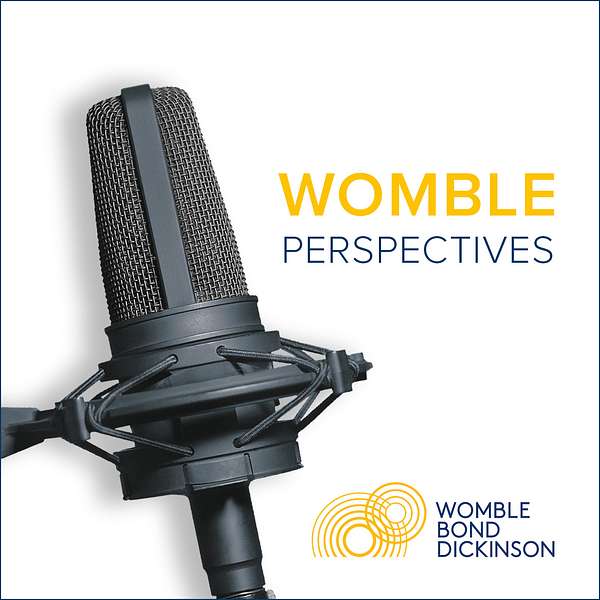
Womble Perspectives
Welcome to Womble Perspectives, where we explore a wide range of topics from the latest legal updates to industry trends to the business of law. Our team of lawyers, professionals and occasional outside guests will take you through the most pressing issues facing businesses today and provide practical and actionable advice to help you navigate the ever-changing legal landscape. With a focus on innovation, collaboration and client service, we are committed to delivering exceptional value to our clients and to the communities we serve.
Womble Perspectives
AI, EU, and the USPTO: updates from the past month
From the EU to the USPTO – we’ve seen some recent legal activity on the AI front.
In March, the European Parliament approve the EU Artificial Intelligence Act, marking a significant milestone for AI governance, and then a few weeks later, the United States Patent and Trademark Office released their guidance on disclosures when it comes to the use of generative AI.
In this episode, we'll dig into these developments and look at what they mean for AI today.
Read the article
The EU Artificial Intelligence (Al) Act: A Pioneering Framework for AI Governance
About the authors:
William Carter, CIPP/US
Katie Hyman, CIPP/E, CIPP/US, CIPM
Hayden J. Silver, III
Read the article:
For All Patent/Trademark Practitioners: USPTO Provides Guidance for Use of AI in Preparing USPTO Submissions
About the authors:
Seiko Okada, M.D., Ph.D.
Samuel A. Savanich
Jeffrey S. Whittle
Welcome to Womble Perspectives, where we explore a wide range of topics, from the latest legal updates to industry trends to the business of law. Our team of lawyers, professionals and occasional outside guests will take you through the most pressing issues facing businesses today and provide practical and actionable advice to help you navigate the ever changing legal landscape.
With a focus on innovation, collaboration and client service. We are committed to delivering exceptional value to our clients and to the communities we serve. And now our latest episode.
From the EU to the USPTO – we’ve seen some recent legal activity on the AI front.
In March, the European Parliament approve the EU Artificial Intelligence Act, marking a significant milestone for AI governance, and then a few weeks later, the United States Patent and Trademark Office released their guidance on disclosures when it comes to the use of generative AI.
First, let’s dig into what makes the EU’s Artificial Intelligence Act such a milestone.
On March 13, the European Parliament greenlit the EU Artificial Intelligence Act, signaling a giant leap forward in AI governance. This groundbreaking regulation stands as a beacon for responsible AI advancement, safeguarding essential rights, nurturing innovation, and providing a roadmap for stakeholders to align with its guidelines, all while propelling conscientious AI growth within the European Union.
By embracing this act, the EU has taken a leadership role in shaping tech regulations, setting a reference point that will shape conversations around AI governance and regulatory frameworks for years to come, influencing not only the U.S. but also governments and businesses worldwide.
Similar to the GDPR, the AI Act casts a wide net, encompassing all AI systems marketed, utilized, put into action, or operated within the boundaries of the EU. Interestingly, even AI system providers or implementers situated outside the EU fall under the purview of the AI Act if their system outputs impact operations within the EU. Furthermore, EU-based companies offering AI systems are subject to the regulations, regardless of whether they deploy these systems within the EU or not. Exceptions exist for personal and research applications, albeit within defined parameters.
We’ve gone into a detailed exploration of key aspects of the Act in a recent client alert on our site. You can find the link in our show notes.
Next up, AI and the USPTO.
The United States Patent and Trademark Office is shining a spotlight on the realm of artificial intelligence for patent and trademark practitioners, urging caution and transparency in activities and filings before the USPTO. The latest guidance, unveiled on April 11, 2024, serves as a crucial companion to its preceding guidance, emphasizing the risks associated with leveraging AI in your submissions.
The USPTO's guidance offers a roadmap to navigate the hazards of AI use in patent activities – from applications to responses. The golden rule? Disclose any AI involvement vital to patentability, maintaining a code of candor and transparency.
This guidance not only echoes ethical standards but also warns of the repercussions of sidestepping AI disclosure or committing errors due to AI reliance. Amidst challenges lie opportunities, as AI promises innovation and efficiency in the legal realm.
For more detailed information on what’s included in the guidance, you’ll also find a link for this topic in the show notes.
Thank you for listening to Womble Perspectives. If you want to learn more about the topics discussed in this episode, please visit The Show Notes, where you can find links to related resources mentioned today. The Show Notes also have more information about our attorneys who provided today's insights, including ways to reach out to them.
Don't forget to subscribe via your podcast player of choice so that you never miss an episode. Thank you again for listening.